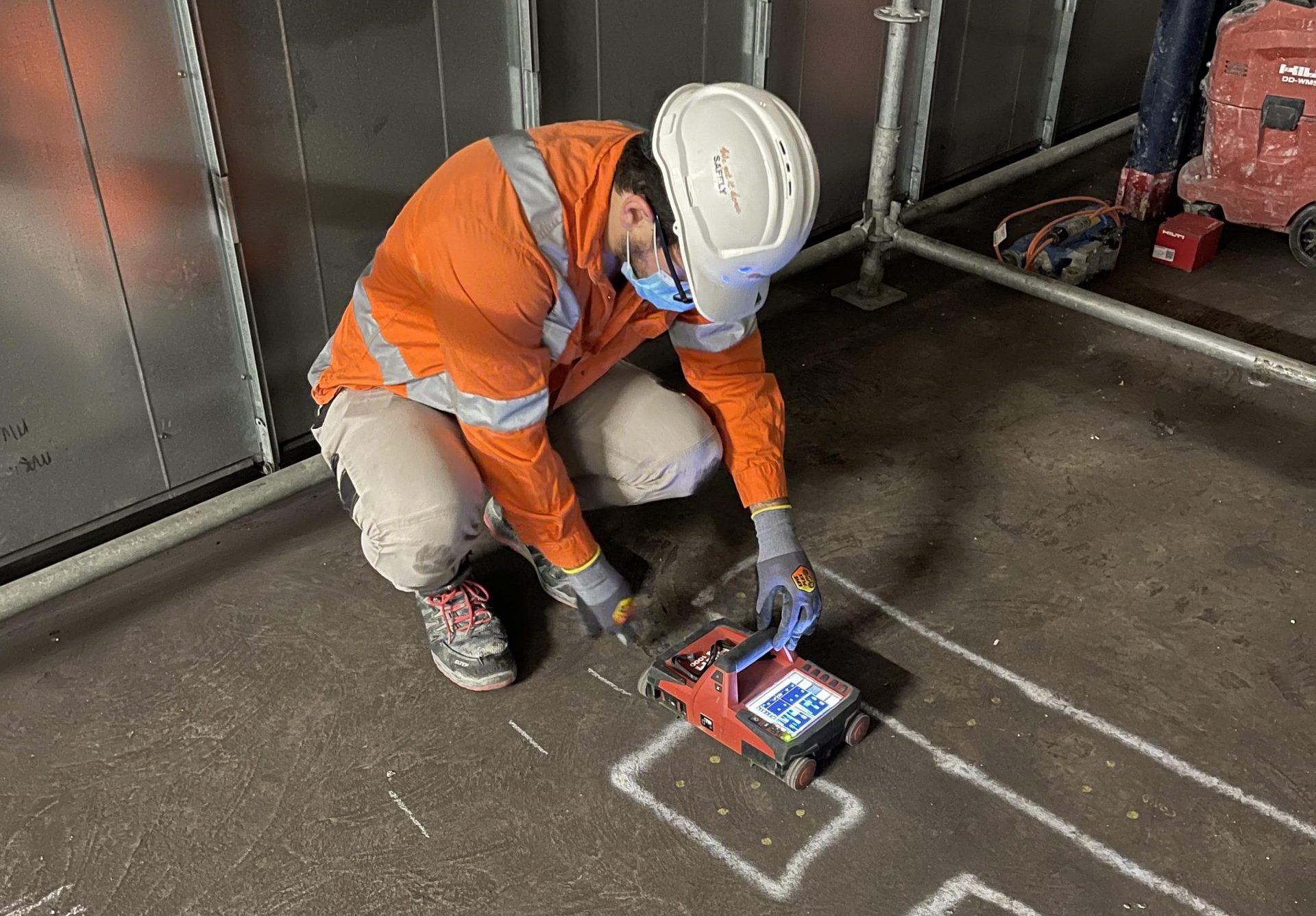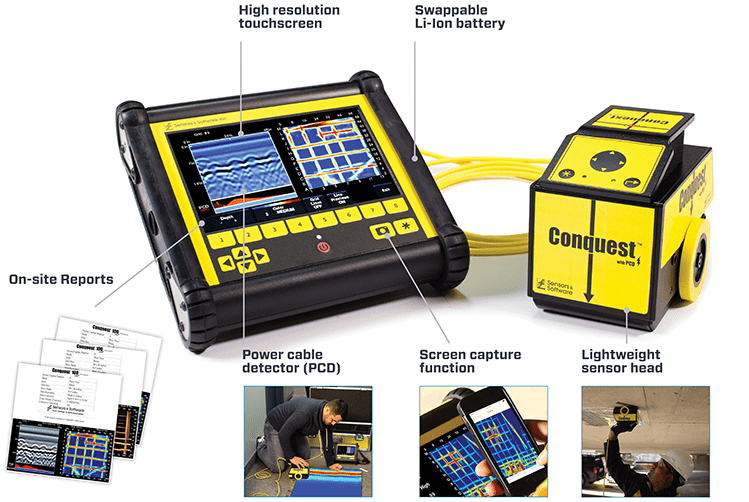Advanced Concrete Scanning Techniques: Making Sure Structural Stability
Advanced Concrete Scanning Techniques: Making Sure Structural Stability
Blog Article
Introduce the Transformative Power of Concrete Scanning in Maximizing Performance and Safety And Security
Concrete scanning has arised as an important device in the building and construction industry, providing unparalleled benefits in improving job performance and making certain security criteria. The transformative power of concrete scanning exists in its capacity to provide detailed insights and real-time data, changing how jobs are planned and carried out.
Importance of Concrete Scanning
Making certain the architectural stability and safety of construction tasks starts with the critical step of performing detailed concrete scanning. Concrete scanning is a non-destructive technique utilized to detect and map subsurface components within concrete frameworks. This procedure is vital in identifying potential dangers, such as rebar, post-tension cable televisions, and channels, that might be hidden within the concrete. By utilizing innovative innovations like ground-penetrating radar (GPR) and electromagnetic induction, building teams can properly find these components without creating any type of damage to the framework.
Additionally, concrete scanning helps in optimizing job timelines and budget plan by preventing unforeseen expenses and delays that may occur due to unanticipated obstructions within the concrete. Eventually, investing in thorough concrete scanning is an aggressive strategy that enhances both effectiveness and safety in building projects.
How Concrete Scanning Works
Concrete scanning runs as a vital tool in construction projects by using sophisticated technologies to discover and map subsurface components without triggering structural damages. Ground Permeating Radar (GPR) and Electromagnetic Induction (EMI) are 2 key techniques used in concrete scanning. GPR jobs by producing high-frequency radar pulses into the surface, which recover when they experience subsurface objects or spaces. The time considered the signal to return shows the depth and area of the items. EMI, on the various other hand, utilizes magnetic fields to determine variances in product compositions, such as recognizing rebar or channels within concrete structures.
During the scanning procedure, the information collected is evaluated in real-time, enabling instant recognition of potential risks or challenges underneath the surface area. By utilizing these innovative innovations, concrete scanning substantially lowers the threat of pricey problems and injuries on construction websites.
Advantages of Concrete Scanning
Utilizing advanced scanning modern technologies in construction projects offers a wide range of advantages, enhancing both effectiveness and safety and security on-site. Among the main advantages of concrete scanning is the capability to identify and situate ingrained things such as rebar, post-tension wires, and avenues properly. By identifying these elements prior to exploration or reducing right into concrete structures, the threat of unexpected strikes is substantially lowered, stopping possible injuries to workers and damages to the framework itself. Furthermore, concrete scanning assists in preparation and developing better, as it offers exact info about the place and depth of architectural elements.

Situation Research Studies: Concrete Scanning Success

In one more instance, a building firm utilized 3D concrete scanning to examine the problem old concrete structures in a historic structure. The detailed scans provided useful understandings right into the extent of wear and tear and assisted focus on upkeep efforts properly. By proactively dealing with locations of problem identified with scanning, the firm was able to expand the life expectancy of the framework and guarantee passenger safety and security.
These situation research studies underscore the transformative power of concrete scanning in boosting effectiveness, accuracy, and security in construction tasks.
Implementing Concrete Scanning in Projects
Implementing sophisticated scanning modern technologies during construction tasks has actually come to be significantly essential for enhancing precision and safety and security. By integrating concrete scanning into project preparation and implementation, building and construction groups can identify potential hazards, such as rebar or post-tension cable televisions, hidden within concrete frameworks. This positive technique lessens the threat of mishaps, delays, and costly rework, ultimately causing more efficient project timelines and budget plans.
To carry out concrete scanning properly, job managers ought to team up very closely with seasoned scanning experts to identify one of the most look at this now appropriate scanning techniques for the details job requirements. Involving scanning professionals from the beginning of a task allows the group to produce extensive scanning strategies that attend to essential locations of concern and make certain thorough data collection.
In addition, integrating concrete scanning into routine project process can improve decision-making procedures, as real-time scan information offers prompt insights right into the condition of concrete frameworks - Concrete Scanning. This data-driven method facilitates notified problem-solving and allows groups to make modifications promptly, promoting a society of effectiveness and safety throughout the job lifecycle

Verdict
Finally, concrete scanning plays an essential function in boosting performance and security in construction tasks. By making use of advanced innovation to map and find out underlying structures within concrete, this process helps to avoid costly mistakes, make certain architectural integrity, and decrease dangers on website. With the ability to uncover covert components and provide accurate data, concrete scanning shows to be a useful device for maximizing task end results and making best use of overall success.
Concrete scanning is a non-destructive method used to spot and map subsurface aspects within concrete frameworks. Furthermore, concrete scanning aids in maximizing task timelines and budget by avoiding unexpected costs and delays that may develop due to unforeseen obstructions within the concrete. One find significant instance study entails a large-scale restoration task where concrete scanning played a critical role in making sure job success.In an additional case, a building business used 3D concrete scanning to examine the problem of aging concrete structures in a historical structure. By integrating concrete scanning right into job preparation and implementation, construction teams can determine possible threats, such as rebar or post-tension cable televisions, hidden within concrete structures.
Report this page